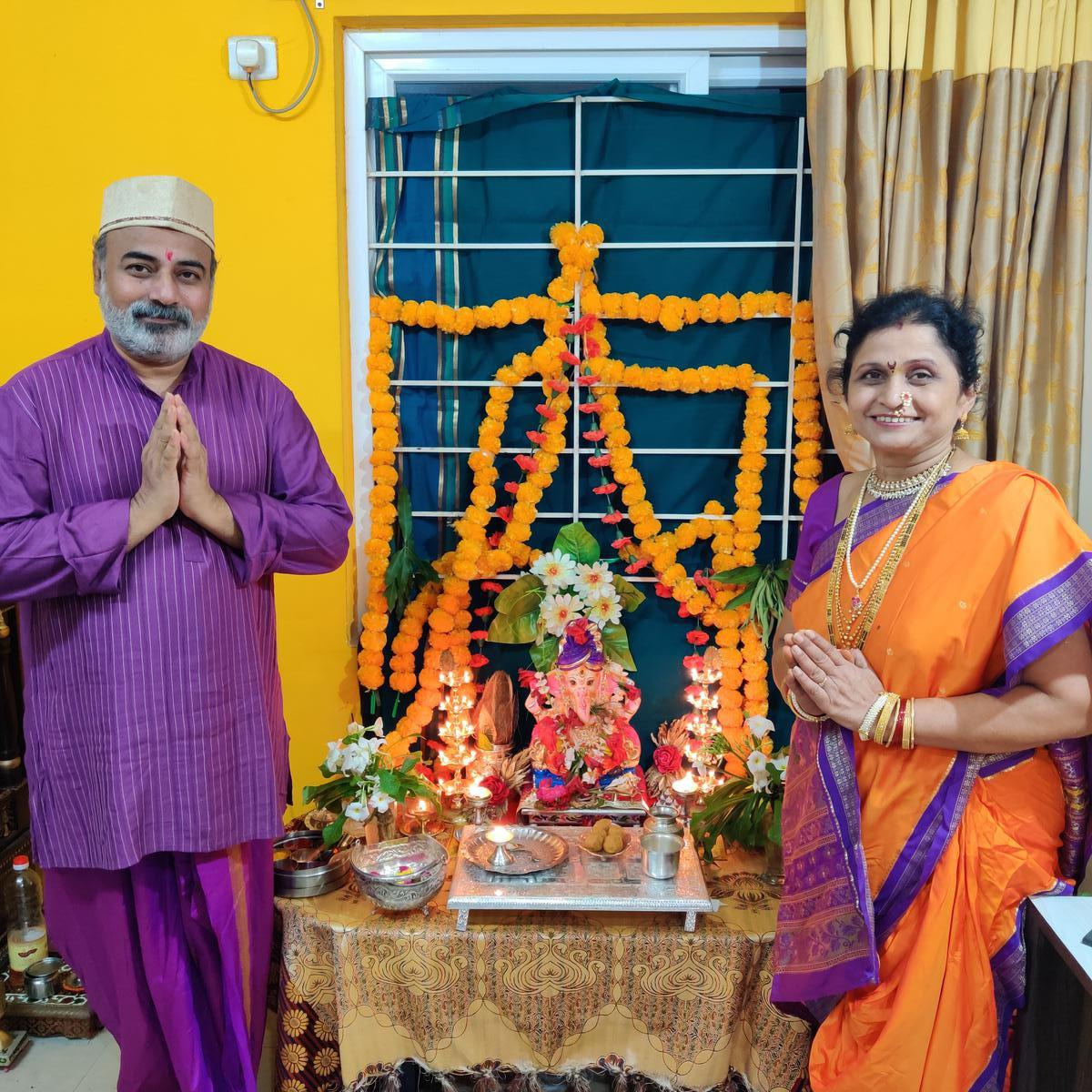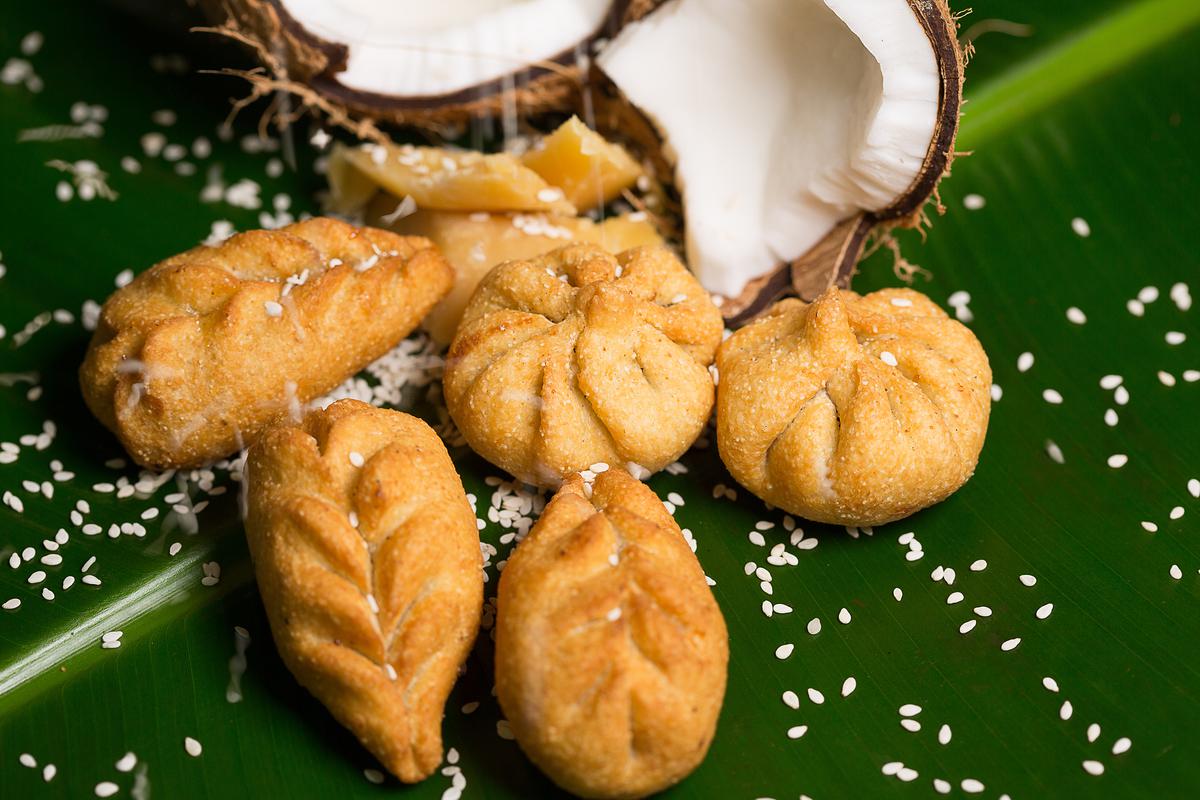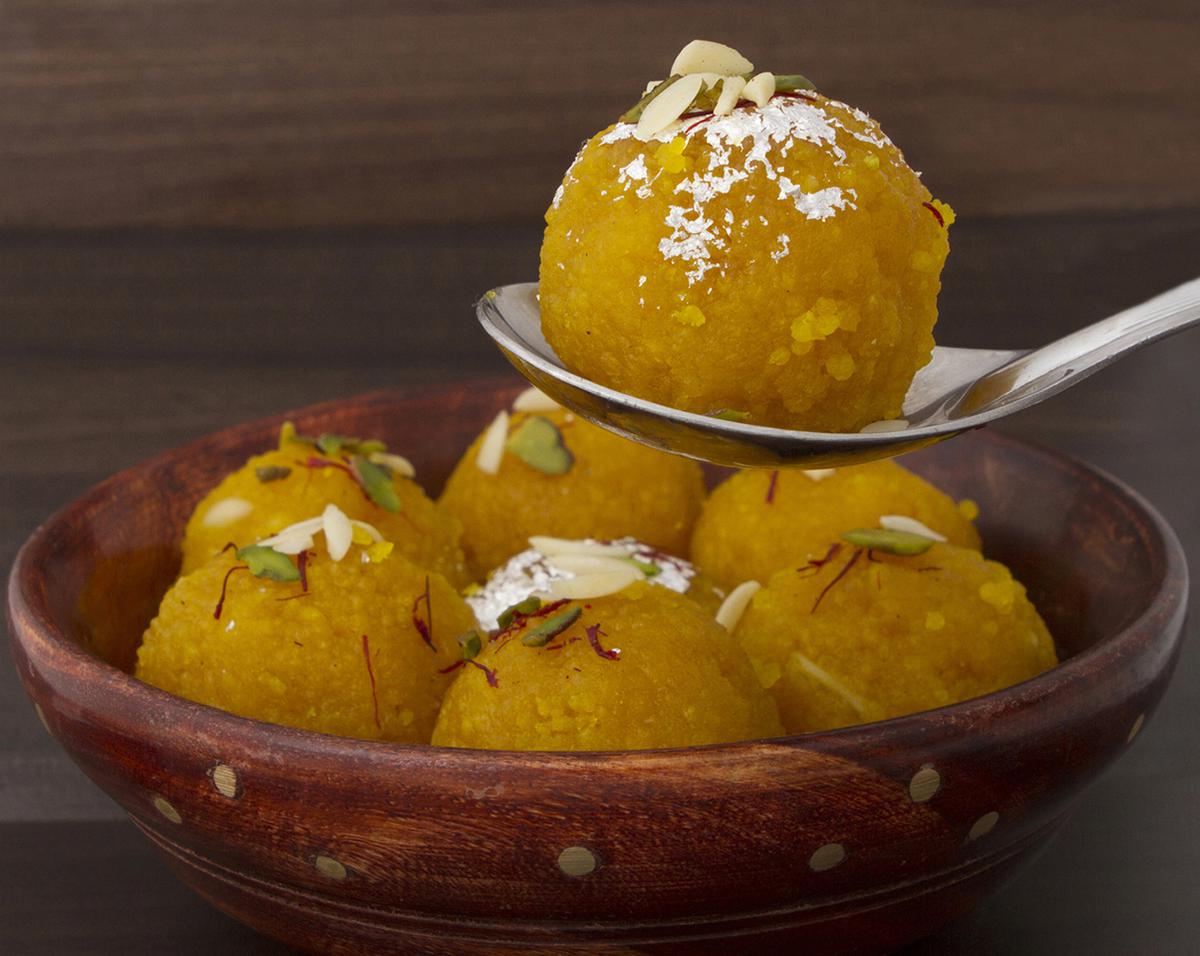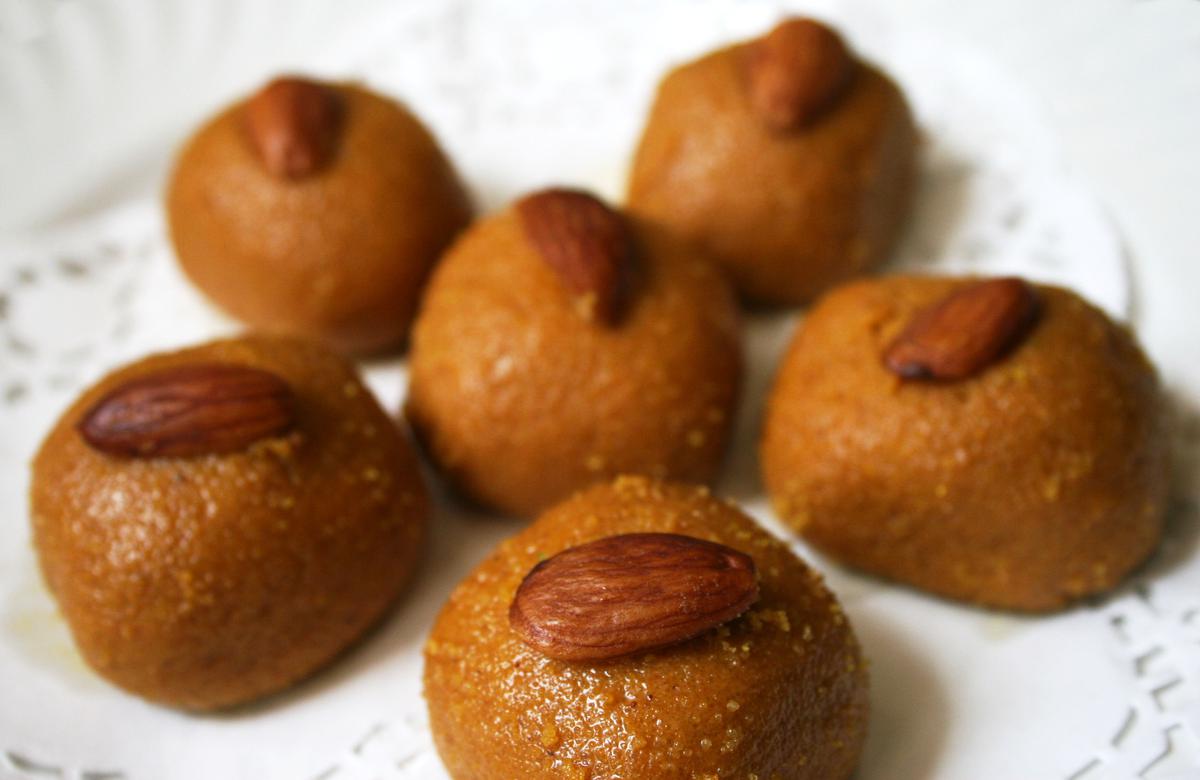From Vinayaka Chavithi onwards, the Vizagites share the traditions they have brought with them from their home states
From Vinayaka Chavithi onwards, the Vizagites share the traditions they have brought with them from their home states
With a melting pot of cultures, Visakhapatnam is a home to many communities who have brought with them their culture and tradition to the city. Before Vinayaka Chavithi, Vizagites talk about some of their traditional festive Ganesh Chaturthi dishes and how they celebrate the festival every year.
Modak for Ganesh Chaturthi | photo credit: special arrangement
At the house of Bhagyashree Barbadikar, the celebration of Vinayaka Chavithi or Ganesh Chaturthi is synonymous with a grand feast with all the traditional dishes of Maharashtra. The preparations begin a few days before with the aroma of Ganesh’s favorite modaks, which are prepared in large batches at his home. Bhagyashree says, “It has been more than 16 years since we came to Visakhapatnam, but I celebrate Ganesh Chaturthi with the same enthusiasm as I did in my hometown Nagpur.” Their festive food includes khirapat, a favorite offering made to Lord Ganesha in Maharashtra. “It is a blend of dry coconut, sugar and dry fruits and is easy to make. Every Maharashtrian family makes kheerpat on the first day of the festival and offers it to the guests visiting their home during the 10-day festivities,” says Bhagyashree. Other offerings are dal kakdi (soaked raw chana dal and cucumber pieces), peda (sweet), fruits, chana dal (whole and coarsely ground) and cooked black gram dal.

Bhagyashree Barbadikar from Visakhapatnam at home during her traditional Maharashtrian Ganesh Chaturthi festival. , photo credit: special arrangement
But the celebration of the festival is incomplete without Modak, the favorite sweet of Lord Ganesha. According to Bhagyashree, this little sweet dumpling takes on different forms as you move from region to region within Maharashtra. “In Nagpur, which comes under the Vidarbha region of Maharashtra, we make fried modaks. In Mumbai, Konkan Belt, Nashik and Pune, Steamed Modak is more famous. The outer covering of the modak is prepared with rice flour, while the stuffing is made of grated coconut and jaggery,” she adds.

Modak for Ganesh Chaturthi | photo credit: special arrangement
Over the years, the dessert has undergone many changes with variations like dry fruit modak and chocolate modak. But the traditional way of making modaks, steamed or fried, says Bhagyashree, still remains at the core of Maharashtrian celebrations for Ganesha. Her 10-day celebration at home ends with a nutritious and sumptuous dish of Gopalkala, which is also a highlight during Janmashtami. A traditional Maharashtrian delicacy, Gopalkala is made with rice, curd, cucumber and spices. “This is a healthy and fire-free cooking dish that can be made in a matter of minutes and served as a snack or snack,” she adds. And it is not just festive dishes, says Bhagyashree, Ganesh idols in Maharashtra have a very unique look and feel, who are bringing them from Nagpur this year.

Indian traditional laddu sweet food is also known as Motichoor laddu. photo credit: Getty Images
According to Preeti Patil, who moved to Visakhapatnam from Maharashtra five years ago, while modaks are an integral part of Maharashtrian celebrations, the offerings also include puran poli, amti, basundi and kurdai. “Puran Poli is a sweet paratha made of chana dal, flour, cardamom and sugar. While making this, we save the water of chana dal and use it to make amti. So in a way, both the dishes are made together,” says Preeti.
In Rajasthan, Lord Ganesha is welcomed with Churma Laddu, a crunchy version of the sweet dish. Every year before Vinayak Chavithi, Usha Goyal gets busy preparing churma laddus for her home festivities and also gives them special orders for her celebrations and dishes. “Churma ladoos are made from wheat flour and jaggery and are prepared by continuous roasting, followed by dry fruits,” says Usha, who runs Manch-a-Treat, a home-baking venture. Apart from Churma laddus, gram flour laddus made of gum are also offered as prasad to Lord Ganesha in Marwari homes.

Besan Laddus | photo credit: special arrangement
Giving a twist to the traditional modak, Usha will be making Modak Nankhatai this year. “Festival dishes can be made in a healthier way, where people can feel less guilty about digging into sweet pleasures. Modak Nankhatai will replace refined sugar with brown sugar and instead of adding in ghee or oil for frying Will be baked,” she says.
In traditional Andhra homes in the coastal region of Andhra Pradesh, the modak takes the name of jilledu kayalu. “It is prepared from rice flour filled with a mixture of coconut and jaggery or sugar,” says K Vijayalakshmi, a housewife from Visakhapatnam. This Andhra version of modak is long and cylindrical in shape and is said to have originated in Visakhapatnam, Vizianagaram and Srikakulam districts.